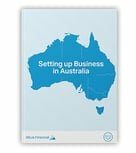At a glance, things to consider when writing a succession plan for your small or family business include:
- Developing your future business leaders
- Analysing your corporate finance structure options
- Business valuation, including fair market value, investment value and liquidation value
- Managing the general transition process
- The alignment of family interests
- Balancing your financial returns
Succession plans aren’t just for large businesses. In fact, small businesses need succession planning as much as any ASX200 company. Think about these possible succession problems: conflicting family interests, market uncertainty, opportunistic employees just waiting for their chance to derail the status quo. It sounds dramatic, and it certainly can be. Avoid the drama and provide your business with a smooth transition by writing a foolproof succession plan.
Is succession planning simple? Unfortunately, it’s not. It requires careful consideration and a planned approach. But your efforts will be rewarded with a profitable transition.
Small Business Succession Planning
With baby boomer business owners on the cusp of retiring, Australia is going to be experiencing an unprecedented transfer of business ownership over the next few years.
Retiring business owners can pre-empt instability by simply creating business succession plans that address the unknowns and prepare the business for transition.
The Succession Planning Process
We generally think solely of the future when we approach succession planning, but it’s also important to look at how your business is operating today. Your current operations will give you a starting point for devising a plan to protect the following:
- Assets
- Future growth
- A harmonious structure
- Optimised taxes
- Worry-free retirement for owners
In an effort to secure these benefits, business owners should include the following items in their succession planning process.
Development of Future Business Leadership
Preparing successors for leadership is one of the most important aspects of a succession plan. You’ll need to thoughtfully consider who wants to be a leader, who matches the business’s objectives, and who presents risks. People come and go, so don’t pin all of your hopes on one person. Analyse your talent crop and prepare them well for their future responsibilities.
Analysis of Corporate Finance Structure Options
The business’s structure affects taxation and how easily you can transfer wealth. The most advantageous structure options allow businesses to grow and transfer wealth without incurring heavy taxes on stakeholders. Your financial adviser will be able to help you determine which structure options will work best for your business.
Business Valuation
The value of a business can change dramatically over time, and the value can be different depending on the purpose of the valuation. Business valuation can be divided into three categories: fair market value, investment value, and liquidation value.

The valuation of your business may change substantially before you exit, but a good valuation will assist your succession planning. It can help you to make appropriate long-term plans about divisions, transfers, and consolidations.
Family Business Succession Planning
The Australian Bureau of Statistics (ABS) found that 87 per cent of businesses in the country were family operated as of 2011-2012. Family-owned businesses face additional issues that can be smoothed through thoughtful business succession planning.
Generational Transition
Successfully handing a business down from one generation to another is difficult and emotionally charged. You may need to deal with unequal wealth transfers, resentment, diverse family structures, jealousy, and other difficult issues. A thoughtful succession plan can minimise these issues and keep communication clear and open.
Alignment of Family Interests
The older generation may be counting on the family business to fund retirement while the younger generation may have different ideas about the direction of the business. Again, working through the details of a succession plan can help to align family interests and avoid conflict.
Balancing Financial Returns
It can be difficult to create a buyout agreement within a family business. When the retiring generation looks to the value of their interest, they tend to look to the number at the bottom of the balance sheet. However, a true value of a business should probably be based on an earnings capitalisation model instead of the balance sheet number. Working through this concept can be difficult, but it can also result in a fairer plan for all parties involved.
If you’re working through your own succession plan or needing help getting started, contact us at Altus Financial.



/logo.png?width=194&name=logo.png)




/Altus%20Menu%20v%202%20Personal.png?width=136&name=Altus%20Menu%20v%202%20Personal.png)









